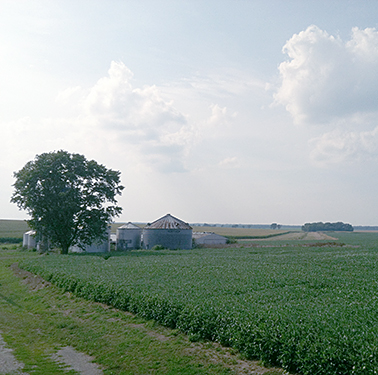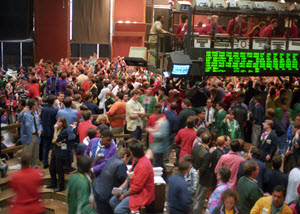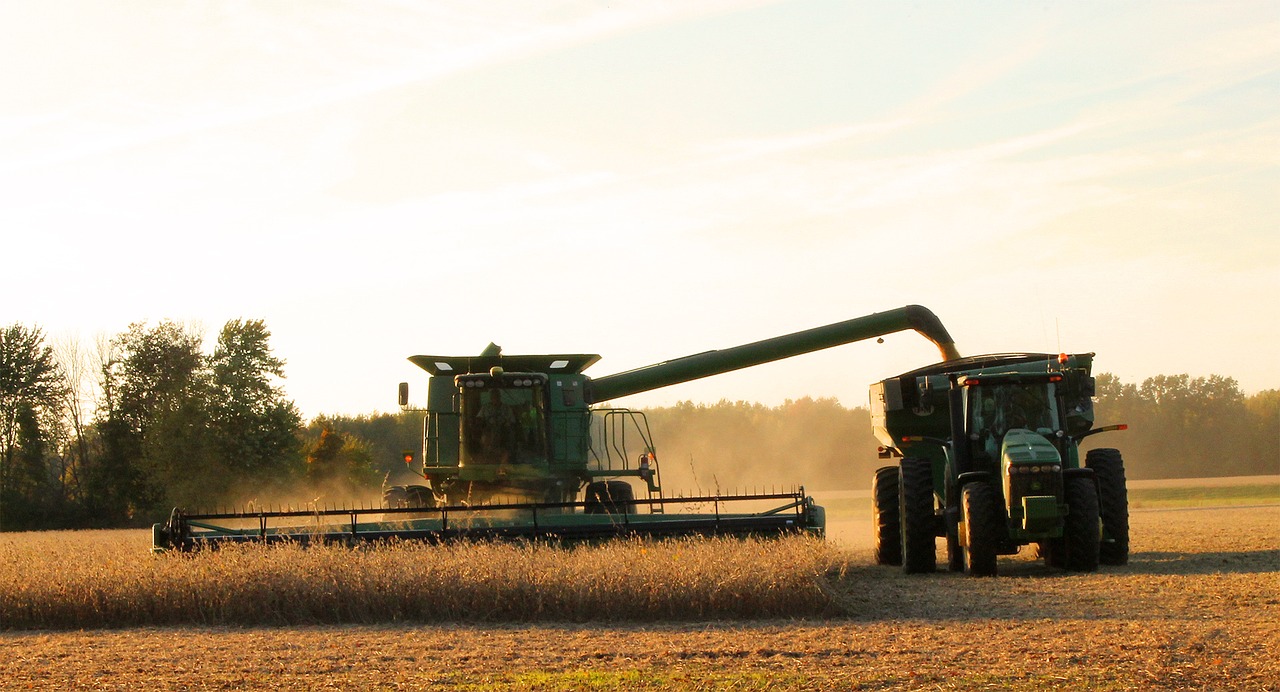THE OPEN
July beans: 5 higher
July meal: 2.00 higher
July soyoil; 31 lower
July corn: 2 1/2 higher
July wheat: 7 1/2 higher
Prices started the day at market highs, except for soyoil, with better buying after the open, and a short-covering rally in corn and meal. The rally was primarily led by beans, which broke out of its sideways pattern to trade into new highs. Funds were buyers into good commercial selling as better prices were placed.
SOY
- The soy complex opened with a good rally as charts were more constructive which triggered further buying in beans and meal.
- Soyoil prices continued to labor with funds already long and prices working back towards trading range lows. For the most part, soyoil remain ignored as meal took over leadership along with beans.
- Funds started to cover in their meal shorts as July prices traded over $288.00, which triggered buy-stops and took prices up to its first key technical resistance level at $293.00.
- July beans found upward momentum over previous tops at $8.62, moving quickly to new trading range highs on the back of better perceived demand. November beans tacked on gains as well, having moved through key resistance at $8.65 to target higher resistance levels closer to $8.80. The primary reason behind the buying spree is that US beans are now less expensive, particularly as the Brazilian Real strengthens against the US dollar, along with a rising cash basis as Brazil's exportable supply seems to now be tapped out.
- Sales to unknown and good US prices also means that others may be looking to purchase US as well.
- Spreads were narrower with July/Nov beans firming into 6 3/4c from 9 1/4c. Oilshare moved lower as meal prices gained on soyoil, with August at 32.23% and crush trading down to 83.24c/bu.
- Producers were waiting for a rally such as this, with better movement noted as prices traded to the highest targets for an upward rally, namely $8.80 Nov beans and $8.75 July.
GRAINS
- Corn and wheat prices moved higher on short-covering activity.
- Corn was a follower of beans, but the 290K short decided to finally make a move today on soy complex strength.
- China auctioned off more corn from their reserves yesterday, and ideas are floating that perhaps China could be interested in purchasing US corn.
- Wheat prices found strength technically and would note that Russian domestic prices are firmer which could push sales back to the US. Wheat prices followed along moving over resistance levels at $5.22, which could confirm a market bottom depending on settlement activity. For July Chicago wheat to be an inverted head and shoulders bottom, prices must close above the $5.22/$5.25 level, and not fall back into the previous trading range.
- Spreads were a touch narrower for corn and wheat. July/Dec corn narrowed into 13c from 14c, while July/Dec wheat traded into 13c from 13 3/4c.
- Dryness in the western Plains triggered short-covering in Kansas City July wheat to the 100- and 50-day moving averages which crossed from $4.74 to $4.77. Closing over this level would promote a higher trade back towards $4.90.
AT MIDDAY THE MARKETS ARE AS FOLLOWS:
HI LO
July beans: 11 higher 8.73 1/4 8.55 1/4
July meal: 4.60 higher 292.40 285.70
July soyoil: 11 lower 2786 2750
July corn: 5 higher 3.29 1/2 3.24
July wheat: 15 higher 5.29 5.12
July canola: 3.00 higher 465.00 459.20
OUTSIDE MARKETS
Stocks started the day 50 pts lower but traded up 100 pts into the early part of the trading session. Crude oil remains weak trading down to $36.38/barrel. The US dollar breaks again to new lows, trading down to 96.59.
CLOSING COMMENTS
Prices were stuck at market lows and a rule of thumb is that stuck markets have to become unstuck. Funds attempted to drive July corn prices back under $3.20 yesterday, but the inability to do so along with higher neighboring markets finally created some short-covering. The rally in corn remains subdued compared to beans, with prices still contained due to bearish ongoing fundamentals. The real tip-off for higher bean trade came from its ability to ignore all bearish headlines this week, meaning that there would be some inherent strength which came to fruition with today's rally. China continues to keep an eye on prices.
Prices may be getting close to levels that offer an attractive selling opportunity, particularly in corn. If long, would probably use today's rally to book a profit, but keep the rest in case the markets see a continued constructive settlement today, which could lead to another leg up tomorrow before we see end-of-week profit-taking. As it stands, the potent rally has taken prices into key moving averages that may hold prices. If needing to scale up sell something, today's rally is not a bad starting place.
The rolls begin tomorrow, as July contracts get spread or are rolled forward. If corn spreads firm on it, may provide a good opportunity to bear-spread something, in case weather works out to be normal.
Have a good evening.............
TAGS – Feed Grains, Soy & Oilseeds, Wheat, North America


 Friday’s strength in CBOT and broader global ag commodity futures was simply a foreshadowing of the rallies that would develop on Monday. Heading into the weekend, markets were jittery on perceived weather risks, many of which turned out to be prescient. Over the weekend, parts of the U.S...
Friday’s strength in CBOT and broader global ag commodity futures was simply a foreshadowing of the rallies that would develop on Monday. Heading into the weekend, markets were jittery on perceived weather risks, many of which turned out to be prescient. Over the weekend, parts of the U.S...
 Update for 1 April 2024: Last year, users pointed out differences between the 5-year averages reported in this app and what USDA estimates in its weekly report. The difference exists because WPI calculates average based on the last 5 years of observations for the current week. In cases where ob...
Update for 1 April 2024: Last year, users pointed out differences between the 5-year averages reported in this app and what USDA estimates in its weekly report. The difference exists because WPI calculates average based on the last 5 years of observations for the current week. In cases where ob...
 Trading Waste Rich Westerners consumed so much plastic that even though landfills take much of it, their export of plastic waste now overwhelms Asia. Then Western policymakers gave yellow grease (used cooking oil) a very low carbon score for use as energy since it is a form of recycling. With h...
Trading Waste Rich Westerners consumed so much plastic that even though landfills take much of it, their export of plastic waste now overwhelms Asia. Then Western policymakers gave yellow grease (used cooking oil) a very low carbon score for use as energy since it is a form of recycling. With h...